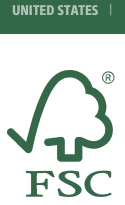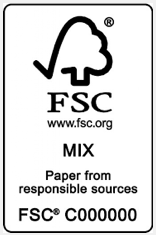 We have promised several times recently to write more about the FSC Controlled Wood revision process. Despite keen interest (and a lot of good intentions), this project kept getting postponed. One very good reason is the sheer complexity of the topic. But that – after all – is just an excuse. And – as we have said before – Chain of Custody should be easy! So we will try to summarize the situation as best we can.
We have promised several times recently to write more about the FSC Controlled Wood revision process. Despite keen interest (and a lot of good intentions), this project kept getting postponed. One very good reason is the sheer complexity of the topic. But that – after all – is just an excuse. And – as we have said before – Chain of Custody should be easy! So we will try to summarize the situation as best we can.
Controlled Wood (CW) = Due Diligence (DDS)
It is helpful to remember that the FSC Controlled Wood program is not particularly unique. All three of the major Forest Product Chain of Custody (CoC) programs have similar and parallel requirements. MixedWood summarized them here nearly a year ago. Their function and purpose consists of three basic steps:
- Gather and maintain basic information about the source of non-certified inputs to your CoC system.
- Periodically evaluate the likelihood (i.e. risk) of ethically unacceptable material in your supply chain.
- Segregate and isolate any material that does not meet your eligibility standards for mixing in the CoC system.
Taken together, a system following these steps allows a company to demonstrate that they have exercised “Due Diligence” in avoiding unethical or illegal inputs. We call these programs Due Diligence Systems – abbreviated DDS.
Historically, PEFC & SFI have taken a simple and flexible approach to this process. Both have significantly confused the issue, recently, by releasing overly-complex and confusing new standard language. But both still focus their efforts on identifying illegal sources, and take an open and non-prescriptive approach to the risk assessment process (step 2 above).
FSC, of course, likes to be different. Their program is based on ethical standards that go beyond legality, and – importantly – identify a series rather complex and convoluted expectations for demonstrating compliance. The result, over 10 years of implementation and practice, has been a bit of a disaster.
Consolidating Risk Assessment
Efforts and discussions to “fix” the FSC Controlled Wood (CW) system have been underway for at least 4 years. A big part of this work has focused on the quite reasonable idea of consolidating all of the overlapping, geographically-based Risk Assessments at the national level. This work was assigned to the various national affiliates, including FSC-US and FSC-Canada in 2012, with an implementation deadline of 31 Dec 2012. Needless to say that timetable did not last long.
The devil, of course, was in the details. Here in North America, we had a wide and rich assortment of company-generated Risk Assessments that covered the entire wood-producing regions of Canada and the US. What the national affiliates should have done was simply consolidate and summarize this pre-existing work. Unfortunately they decided to start from scratch. And they are still hard at work. Nominal timetables can be found online here (for FSC-US, FSC-Canada, and FSC-IC). In theory, this process is scheduled to conclude at the end of 2015. It is very, very doubtful that it will.
Divide and Conquor
The folks at FSC are not oblivious to their challenges. They are making a sincere attempt to resolve the National Risk Assessment bottleneck. Their efforts, unfortunately, could possibly make the situation worse. Rather than simplifying and streamlining a process that everyone acknowledges is overly complex, they have attempted (as they so often do) to solve it by adding complexity! You can see the result here and here. In addition to existing Company Risk Assessments, and the under-construction National Risk Assessments (NRA’s); we now also have Centralized National Risk Assessments (CNRA’s), and even Interim Risk Assessments. The whole thing defies any attempt to summarize. Follow this link to take a look for yourself. It is frustratingly and absurdly complex.
The US Situation
 The staff at FSC-US are to be congratulated for making some real progress on their part of this challenge. They recently managed to produce and publish a first discussion draft of the US National Risk Assessment (NRA). You can download and read their work here, or look at a shorter summary. They had an official comment period that closed in March, but I am told that they still welcome comment.
The staff at FSC-US are to be congratulated for making some real progress on their part of this challenge. They recently managed to produce and publish a first discussion draft of the US National Risk Assessment (NRA). You can download and read their work here, or look at a shorter summary. They had an official comment period that closed in March, but I am told that they still welcome comment.
The draft NRA is (not surprisingly) a bit long and confusing. But it contains some promising stuff. It does NOT address FSC CW Risk Categories 1, 2, & 5: the ones dealing with 1) Legality, 2) Traditional & Civil Rights, and 5) GMO’s. These categories are addressed by the Central National Risk Assessment (CNRA) documents that are being produced by FSC-IC. The (unstated) assumption was that these categories are the “easy one’s”, unlikely to cause problems. The discussion drafts (especially Category 1 and Category 2) seem to indicate otherwise. Time will tell.**
The US draft NRA focuses on the remaining CW Categories: 3) High Conservation Values (HCV), and 4) Conversion. Their treatment of Category 4 is refreshingly straightforward. They recommend a “low risk” designation at the national level and provide an interesting and innovative framework for acknowledging and accepting the de minimis conversion that inevitably occurs in all developed landscapes. We hope that PEFC and SFI will take a lesson from this approach. The treatment of Category 4 (HCV) is predictably more troubling. FSC-US have done a good, comprehensive job of analysis, but the mechanisms they offer for working around this issue still need a lot of work.
A Standard within a Standard
FSC’s newest version of the CW standard (FSC-STD-40-005 v.3-0) – still under consultation – contains a new, and very important definition (on pg. 5).
Control Measure (CM) is defined as “An action that The Organization shall take in order to mitigate the risk of sourcing material from “unacceptable” sources“.
This new term is used extensively in the new NRA. These “Risk Assessments” will do much more than just assess risk. They will also define a new set of very specific requirements that every certified company will have to do: new requirements, in addition to the requirements of the CoC and CW standards. In essence, the NRA, and presumably the CNRA, will function as additional, normative (i.e. mandatory) certification standards. This means more requirements to implement, audit, and keep records on; and unlike all other CoC and CW requirements, the Control Measures will vary from country to country. What will these differences look like? What effect will they have on wood markets? No one knows, but they surely bear careful watching.
High Stakes
 Some of us will be tempted to tune this out. It is so hard to keep up with all the detail and complexity. And surely it will work out in the end – right? But if you are reading this blog then you, and your business, probably have good reasons to pay attention and take part. This process is a long way from finished.
Some of us will be tempted to tune this out. It is so hard to keep up with all the detail and complexity. And surely it will work out in the end – right? But if you are reading this blog then you, and your business, probably have good reasons to pay attention and take part. This process is a long way from finished.
Consider just how common this label has become in the paper and wood products business around the world. Remember that each and every product bearing the “MIX” label or claim has CW included in its inputs. This major re-write of the FSC CW system needs to be done well, or we risk adding unnecessary cost and complexity into wood-product markets around the globe. Let us all pay attention and try to get this right.
**UPDATE (4 May 2015): A colleague from Europe wrote to us over the weekend pointing out an error in the “US Situation” section. We neglected to note that FSC-IC has already released discussion drafts of CNRA’s for 20 countries, including the USA, for Categories 1,2 & 5. We have corrected the second paragraph to reflect this.